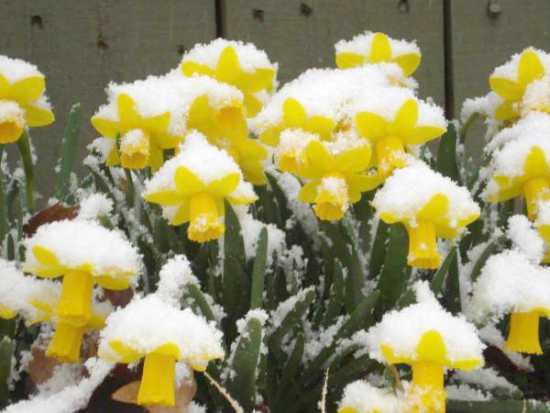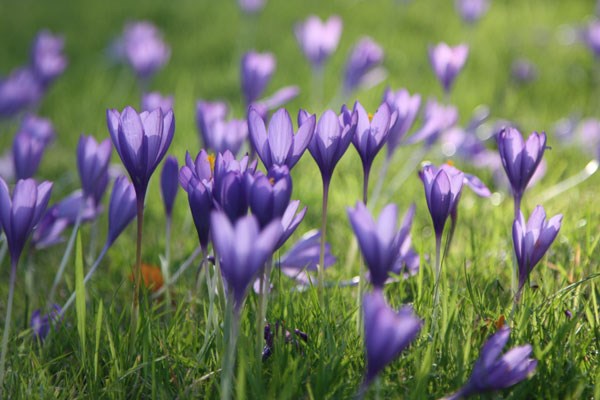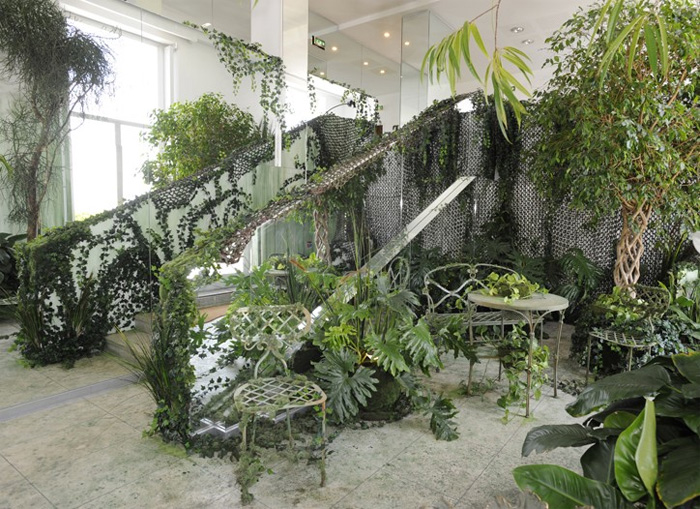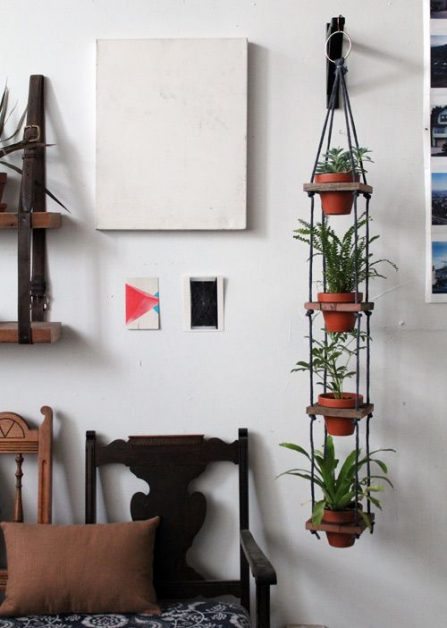 |
| Hiriya landfill turned into a park |
Nine other landfills were turned into Nature Preserves, such as Pulau Semakau, Tifft, Buffalo, Mount Trashmore, Virginia Beach, Bukit Tagar, Malaysia, Millennium Park, Massachusetts, Chambers Gully, Australia, Sai Tso Wan, Hong Kong,
Freshkills Park, New York, and Cesar Chavez Park, Berkeley.
The propagation of mushrooms all across waste sites and disaster zones have been known to clean oil spills and nuclear meltdowns. Eric Rasmussen, a former Defense Department scientist and disaster expert, is collaborating with Paul Stamets to decontaminate the zone around Japan’s Fukushima nuclear reactor with mushrooms. Although methods for cleaning disaster and waste zones may take decade, Paul Stamets suggests several precautions and steps to cleaning the site, for example:
"1. Evacuate the region around the reactors.
2. Establish a high-level, diversified remediation team including foresters, mycologists, nuclear and radiation experts, government officials, and citizens.
3. Establish a fenced off Nuclear Forest Recovery Zone.
4. Chip the wood debris from the destroyed buildings and trees and spread throughout areas suffering from high levels of radioactive contamination.
5. Mulch the landscape with the chipped wood debris to a minimum depth of 12-24 inches.
6. Plant native deciduous and conifer trees, along with hyper-accumulating mycorrhizal mushrooms, particularly Gomphidius glutinosus, Craterellus tubaeformis, and Laccaria amethystina (all native to pines). G. glutinosus has been reported to absorb – via the mycelium – and concentrate radioactive Cesium 137 more than 10,000-fold over ambient background levels. Many other mycorrhizal mushroom species also hyper-accumulate.
7. Wait until mushrooms form and then harvest them under Radioactive HAZMAT protocols.
8. Continuously remove the mushrooms, which have now concentrated the radioactivity, particularly Cesium 137, to an incinerator. Burning the mushroom will result in radioactive ash. This ash can be further refined and the resulting concentrates vitrified (placed into glass) or stored using other state-of-the-art storage technologies.
By sampling other mushroom-forming fungi for their selective ability to hyper-accumulate radioactivity, we can learn a great deal while helping the ecosystem recover. Not only will some mushroom species hyper-accumulate radioactive compounds, but research has also shown that some mycorrhizal fungi bind and sequester radioactive elements so they remain immobilized for extended periods of time. Surprisingly, we learned from the Chernobyl disaster that many species of melanin-producing fungi have their growth stimulated by radiation" (Permaculture: Practical solutions for self-reliance).
I have mentioned many times how to use Trash, waste, and other recyclable materials in the garden and when constructing the home, which you can see in some of my posts: Construct a Greenhouse using Free supplies, Recycled Cardboard box garden, Recycled (car/truck) Tire Gardens, and Cloches plant protection (early planting & extend growing season). I did mention that using car/truck tires for growing vegetables is not recommended, but many gardeners do this. In other words, if you don't feel comfortable using plastic, pallets, tires, or cardboard in your garden, don't use them.
Specifically on this topic, I wanted to present how I have been handling Trash/waste that I cannot use in the garden or home. There are simply materials that are dangerously laden with chemicals that you cannot use for the vegetable garden. For example, in the last couple of years, James and I have remodeled my mother's home; and in doing so, we have accumulated trash such as drywall, bits of wood, and roof materials we had to pile up in the yard. Instead of taking these things to a landfill (which you have to pay to discard), I spread the waste out to be covered with sticks, then straw, dirt, and mulch. At first I will use the bed for growing non edible plants.
You can see from the photo below the drywall is scattered level, then I have layered twigs/sticks on top. After that I will add layers of straw or grass, then dirt from around the yard, then add mulch to plant flowers. This took about an hour or two to assemble and gather the materials myself. I think if I have another couple of hours I will be able to finish the bed for planting.
Considering this spot is on the West side of the home, it doesn't get much sun, so I will plant flowers/plants that do not require much sunlight like Hostas and Ferns. Actually I have a post on flowers that shade tolerant: List of Shade & Cold tolerant plants (vegetables, herbs, flowers).
"As of 2010, Total MSW generation was 250 million tons. Organic materials continue to be the largest component of MSW. Paper and paperboard account for 29% and yard trimmings and food scraps account for another 27%; plastics 12%; metals 9%, rubber, leather and textiles 8%; wood is approximately 6.4% and glass 5%. Other miscellaneous wastes make up approximately 3.4%" (EPA).
With many of the landfills that exist and radioactive places of the world, we can cover with wood material and grow mushrooms that will clean and absorb radioactivity. You could cover dumps in dirt and mulch then grow trees on top. Of course they do not have to edible fruit or nut trees, but you could grow any types of Trees, and actually grow only fruit/nut bearing trees for the wildlife to create an environment promoting life.
The reason I advocate for using recycled materials is to keep trash OUT of the landfills, however I am not advocating for MORE trash like plastics, cardboard, paper, and glass to be manufactured at all! In fact, I see the use in technology of computers and books, but we do not need to create so much waste per person.
Any foods made in a factory, any clothes, and other useless junk do not contribute to Human evolution and potential. With all of the clothes that already exist, we can cloth every person. There is no need to make anymore clothes when we can all shop at goodwill; with all the food produced in the world, we can feed every person. The reason not every child is fed because of consequential actions of the rich vs poor and livestock industry that grow grains for animals. With all the plates, cups, jars, and silly trinkets that exist we can furnish every home.
Where necessity is concerned, we don't need frying pans, blenders, food processors, bowls, plates, and cups to eat when Fruit harvested from trees are perfectly designed for immediate satisfaction. It's no coincidence that all other animals eat raw-- that's how we were designed to eat.
We can grow our own food by propagating from fruit and nut trees; make our own homes out of clay dirt, straw, and sand for free (see here), we can make our own pottery by firing clay soil with sand. What we produce such as computers and technologies can be made in factories that harness Sun energy for power, and re-route pipes that release carbon emissions into the ground which the plants will use and clean the air (known as Carbon sequestration).
 |
| carbon sequestration |


















































